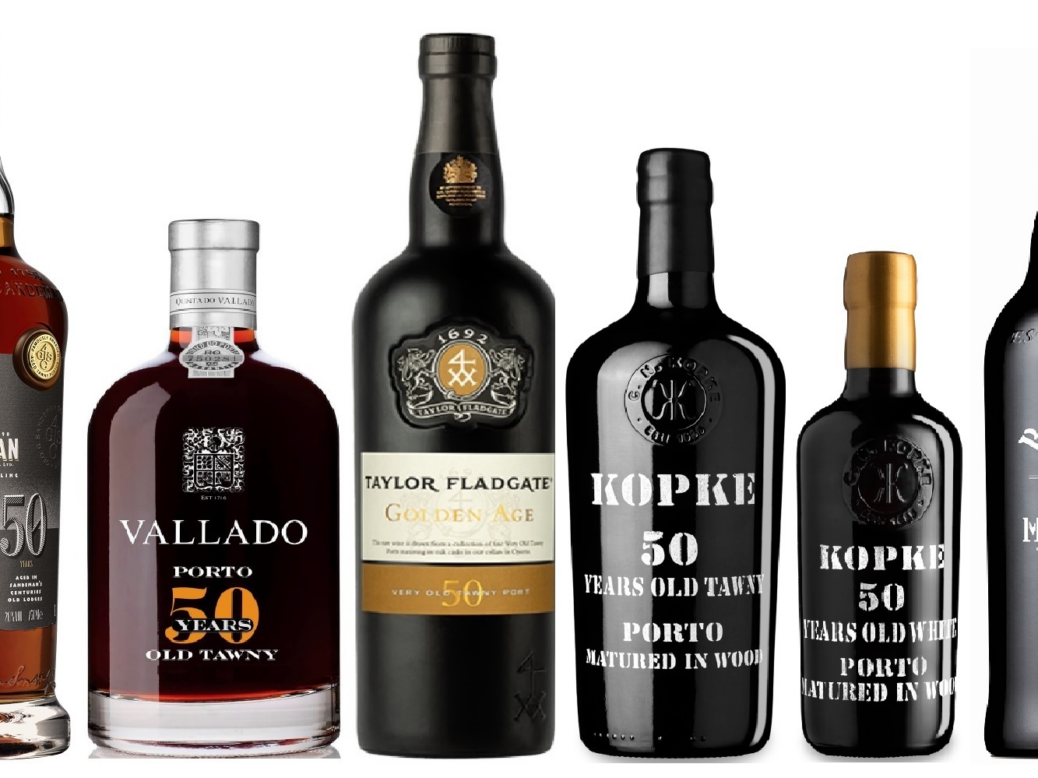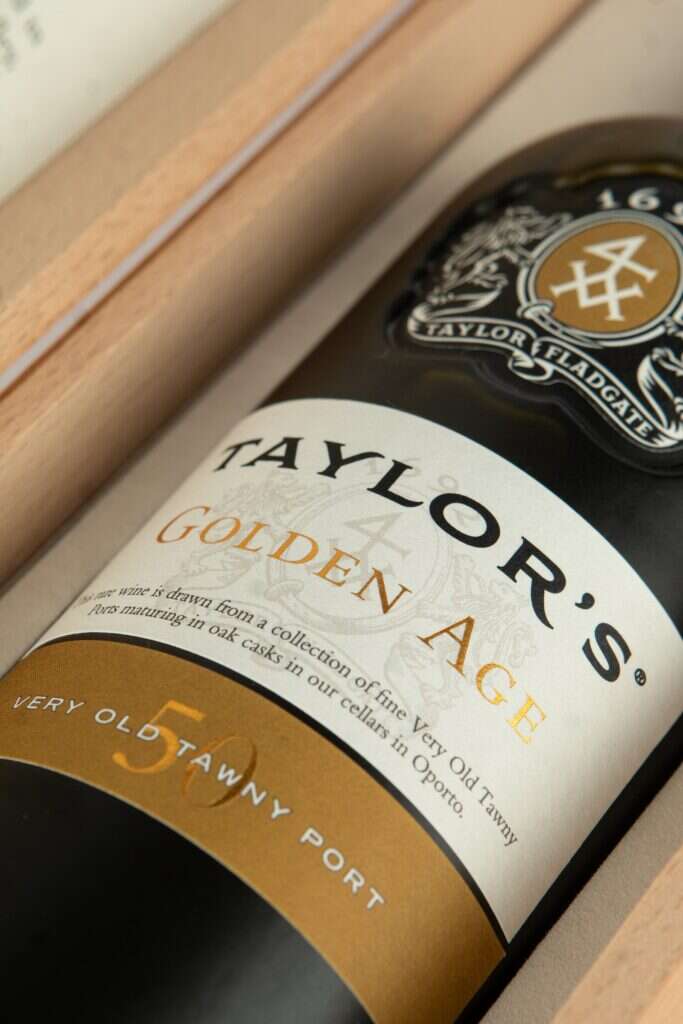
The creation of a new Port category is a rare event indeed, which makes the introduction of the 50-Year-Old age statement on Tawny and White Ports all the more exciting, says Axel Probst as he samples some of the best examples of the new half-centenarian bottlings in each style.
Very little in this world is as consistent as Port regulations. The categories are remarkably stable, and any new one has to be approved by quite a few members to be able to wear the selo of the Port Wine Institute (Instituto dos Vinhos do Douro e do Porto, IVDP) on either the bottle neck or the back label.
Cask-matured Tawny Ports with an indication of age have always been categorized as 10, 20, 30, or over 40 years of age. There are no 5-year-olds (as with Madeira), nor 12- or 15-year- olds (as with Scotch whisky). Fellow Port lovers who were not lucky enough to be born in a great Vintage or colheita year could celebrate their first four decades with these but then had to switch to something else to open for special birthdays or anniversaries. Since January this year, with the new regulamento 3/2022 in place, it is now legal to bottle 50-year-old Tawny Ports and White Ports with the same age, which previously would have been in the category Very Old Tawny/Very Old White Port but were not allowed to wear the number 50 on the label.
Since old Tawny stocks are becoming ever more scarce these days, only a few producers have so far taken the opportunity to put half a century of Port into the bottle. Many did not even bottle the full range of 10- to 40-year-old Tawnies in the past. Most prominently, Dirk Niepoort and Jorge Rosas of Ramos Pinto never produced a 40-year-old Tawny, and Quinta do Noval’s Christian Seely never bottled a 30-year-old.
But some producers with a focus on Tawny Port—and with sufficient stocks—are bottling this new category, and others will soon follow. First on the market was Miguel Braga from Quinta do Mourao, with its S Leonardo. Some years ago, Miguel was already using not only “Very Old Tawny/White Port” on the label, but also a necklace with an “L” (the Roman numeral for 50) to indicate the age, neatly gliding around the existing regulations. Rozes will bottle a 50-year-old at the end of the year.
“We will also bottle a 70-year-old (Very, Very Old) Port,” says managing director Antonio Saraiva, while Symington’s chief enologist Charles Symington reveals that it will bottle a 50-year-old Tawny next year. “It was a great change in the regulations,” says Quinta do Vallado’s co-owner Francisco Ferreira; “I produced 1,000 half-liter bottles and thought they would last until Christmas, but we had already run out of stock by May.” The Very, Very Old Port category is the second change to the legislation, but it will be bottled by even fewer producers due to the paucity of stock.
50 Year Old Tawny Port: The price premium
Why are the 50-year-old Tawnies so much more expensive than the 30- or 40-year-olds? Because they obviously age one or two decades longer on average, and also because only the highest-quality Ports can survive the oxidative process for such an extended period of time. Despite an annual evaporation rate of between 3 and 5 percent, producers need to check the casks regularly to evaluate the further aging potential of the wines. The 50-year-old Tawnies and White Ports currently have retail prices of between £180 and £250, which is almost twice the price of their siblings ten years younger.
Buyers should be aware that Tawny Ports are bottled for direct consumption. Storing does not help them in most cases, since the aromas fade with further bottle age. My personal rule of thumb is that you can leave them for half the time in the bottle that they have aged in the cask. For a 50-year-old Tawny Port, this would still be a quarter of a century. The same applies to open bottles. Since these Tawnies have lived with oxygen for many decades, they do not get better after opening. A month would be the absolute maximum, but given the intensity of the aromas of the Ports, it should not be challenging to finish them sooner.
Tasting 50 Year Old Tawny and White Ports
DR Port Very Old White Port
This Port originates from only one old cask. Bright golden color with shades of orange. An intense bouquet of all kinds of yellow fruit, mostly peach and apricot, with floral notes in the background. Great texture on the palate, with perfectly integrated acidity. Tobacco, ripe peach, and balanced smoky flavors. Very long aftertaste. | 96
Kopke 50-Year-Old White Port
Medium-orange color, with some brownish reflections. Complex but balanced coffee, malty, and nutty aromas on the nose. Balancing acidity, with fresh chocolate, coffee, and malt on the complex palate. Long aftertaste. | 96
S Leonardo 50-Year-Old White Port L
Bright golden color, with intense green reflections. Slightly overripe apricot and peach aromas, honey, and a refreshing herbal note. Very good acidic structure on the palate, which handles the sweetness very well, with great yellow fruits. Long aftertaste. This is the logical continuation of the XXV (25-year-old White Port). | 96
Messias 50-Year-Old Tawny Port (cask sample)
Messias is bottling this soon, having sent me a cask sample of the final blend. There are light-green reflections in the orange-brown color. Floral-fresh bouquet, with caramel, tobacco, and mixed nuts. Strong supporting acidity, with walnut, tobacco, butterscotch, and chocolate. Very long and multilayered aftertaste. | 95
Kopke 50-Year-Old Tawny Port
Yellow-green reflections in the dark-red color. Herbal notes, butterscotch, and malt on the nose, which also reveals a spicy background. The herbs continue well on the palate, with malt, milk chocolate, and honey. The long, fresh aftertaste is perfectly balanced by the acidity. Tasted for the first time at Quinta da Boavista and later with a great view from Quinta do Crasto to Kopke’s Quinta Sao Luiz. | 95
S Leonardo 50-Year-Old Tawny Port
Very dark-red color, with orange reflections and an orange rim. Slightly perfumed bouquet with a great complexity to follow: herbs, nuts, dried figs, raisins, and coffee. Creamy palate, with a hint of spices and tobacco. Chocolate and coffee. Long and pleasant aftertaste.. | 96
Sandeman 50-Year-Old Tawny Port
Does not vary in color that much from Kopke’s 50-year-old White Port, having the lightest color of these Tawnies. Fully transparent bright red, with light green and golden reflections. Elegance and complexity rival in the bouquet with intense honey, caramel, fresh herbs, and some smoky notes. Very good integrated acidity, milk chocolate, herbs, and caramel on the palate. Long and fresh aftertaste. This is the best balanced of the 50-year-old Tawnies. | 96
Taylor 50-Year-Old Tawny Port Golden Age
The darkest of these first releases, with lots of yellow-green and orange reflections in the dark-brown color. Malt and all kinds of herbs, chocolate, and floral notes in the nose. Perfectly balanced palate, with marked but well-integrated acidity and intense honey and caramel flavors. Very long aftertaste; a bit rustic, but in a very positive way. | 97

Quinta do Vallado 50-Year-Old Tawny Port
Olive and yellow rim on the red-orange color. A hint of complementing acetone, all kinds of nuts and dry fruits, tobacco. Creamy and rustic palate, with perfect acidity. Hazelnut, milk-chocolate, marzipan, and tobacco. Fantastic lengsth—goes on and on and on. Like the whole range of the Vallado aged Tawnies, this is fantastic. | 97






